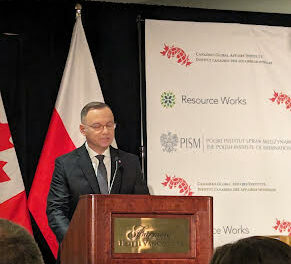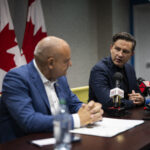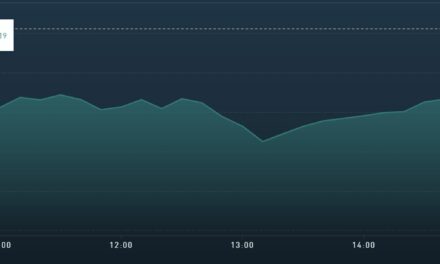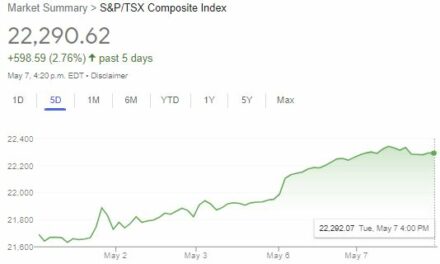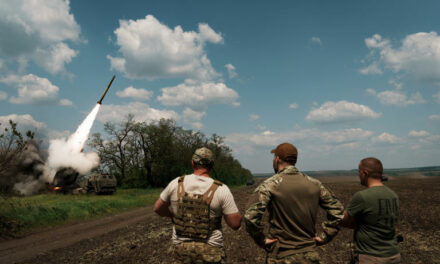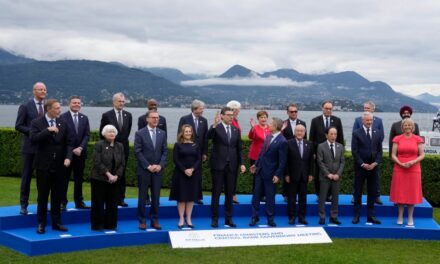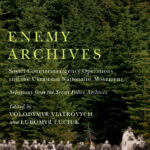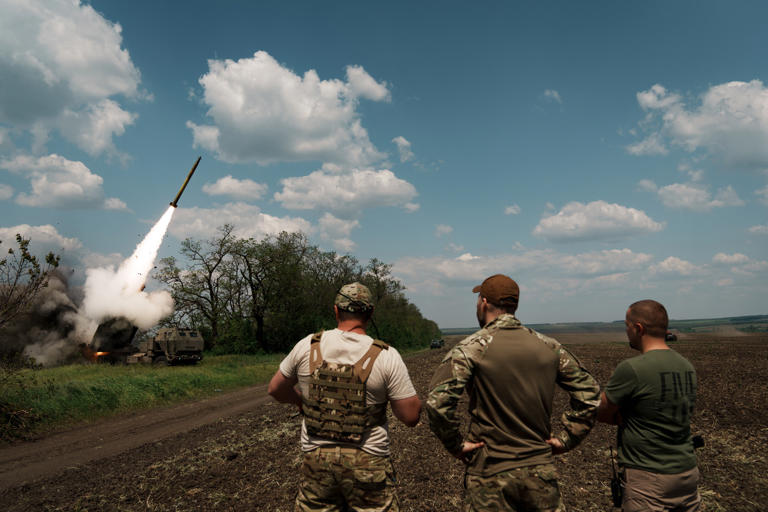Ukrainian militaries supervise as a M142 HIMARS launching a rocket on the Bakhmut direction on May 18, 2023 in Donetsk Oblast, Ukraine. Ukrainian forces destroyed parts of an advanced Russian air defense battery across the border, likely using U.S.-donated High Mobility Artillery Rocket System (HIMARS), according to a new assessment published by the U.S.-based think tank, the Institute for the Study of War on June 3.
Marco Levytsky, Editorial Writer.
After much international and internal pressure, U.S. President Joe Biden on May 30th, 2024 finally agreed to allow Ukraine’s Armed Forces to strike military targets inside Russia. But, consistent with his policy of providing support for Ukraine to fight “with one hand tied behind its back” as Czech foreign Affairs Minister Jan Lipavský put it, this new announcement comes with severe limitations.
Ukraine can only hit targets over the border close to Kharkiv after Russia made significant advances around the city in the northeastern part of the country close to the Russian border. Precisely how much over the border is not defined. As well, Ukraine will not be allowed to use the most formidable munitions it has been given by the US to fire into Russia — the long-range missiles known as ATACMS that can hit targets 300 kilometres, away. And while Ukraine has been allowed to use US anti-aircraft weapons to take down the imminent threat of Russian aircraft flying in both Ukrainian and Russian airspace it is being blocked from targeting Russian aircraft that are on the ground inside Russia. This seriously hampers Ukraine’s ability to defend against aerial attacks.
The White House’s decision “does the minimum to help Ukraine with a difficult situation in the northeast,” removing “a major burden on Ukraine’s efforts to defend civilians in Kharkiv and to stop the Russian offensive,” said John Herbst, senior director of the Atlantic Council’s Eurasia Center and former U.S. ambassador to Ukraine. At the same time, it “makes public a range of restrictions that seem designed to temper Moscow’s reaction.”
“This half step is certainly better than none,” Herbst said, but it “does not send the necessary message of American resolve to the Kremlin. And as Andreas Umland, an analyst at the Stockholm Center for Eastern European Studies at the Swedish Institute of International Affairs pointed out in a May 30 article for the Kyiv Post: “Ideally, Russian combat units on the front line can be cut off from supplies, replenishment and communication from the rear and thereby tactically weakened to such an extent that they have to retreat even without a major Ukrainian attack. This saves Ukraine losses of soldiers and equipment in costly land offensives.”
Other NATO members have permitted Ukraine to use their weapons as they see fit. This includes Britain, Canada, the Czech Republic, Estonia, Finland, France, Latvia, Lithuania, the Netherlands, and Poland. Germany and Sweden also gave permission with the qualification that it falls “within the framework of international law,” as Chancellor Olaf Scholz of Germany put it. And, as a bipartisan group of congressmen from the House Permanent Select Committee on Intelligence who wrote a letter to Department of Defense Secretary Lloyd Austin on May 20th stated: “It is essential the Biden Administration allows Ukraine’s military leaders an ability to conduct a full spectrum of operations necessary to respond to Russia’s unprovoked attack on their sovereign land.” . House Speaker Mike Johnson also supports this position: He told Voice of America “I think, they need to allow Ukraine to prosecute the war the way they see fit. They need to be able to fight back. And I think us trying to micromanage the effort there it’s not a good policy for us.”
The United Kingdom was one of the first to argue for loosening the restraints. “Ukraine has that right,” Foreign Minister David Cameron said during a May 3rd visit to Kyiv. “Just as Russia is striking inside Ukraine, you can quite understand why Ukraine feels the need to make sure it’s defending itself.”
The movement picked up steam when vigorous support by President Emmanuel Macron of France helped persuade a more reluctant Germany to reconsider its position. “It’s as if we were telling them: ‘We’re giving you arms but you cannot use them to defend yourself’,” Macron said in Berlin on May 28th, with Scholz by his side.
As noted earlier, Ukraine’s targets are strictly military and necessary for defence. For example, the ballistic rockets ATACMS (Army Tactical Missile Systems) and similar long-range precision weapons allow Ukraine to destroy Russian military transport infrastructure, ammunition storages, fuel depots, troop barracks, command centres, etc. with pinpoint accuracy far behind the front line. It also needs to destroy Russia’s oil and gas facilities deep inside the empire. Not only do they provide fuel for Moscow’s tanks and missiles, but also the cash the Kremlin needs to bolster its war machine.
The Biden administration has been very cautious about providing Ukraine with the weapons it needs to score an ultimate victory, doing it on an incremental basis for fear of escalating the conflict. Much of this has come about as a result of Russian dictator Vladimir Putin’s reckless rhetoric about nuclear war. But in a May 30th opinion piece for CNN, Adam Kinzinger a former Republican congressman from Illinois who served 10 years on the House Foreign Affairs Committee and Ben Hodges, a former commanding general of US Army Europe said it’s time to call Putin’s bluff.
“Ukraine requested ATACMS missiles, with a range of about 190 miles, to attack Russian targets. The administration initially said no, then changed its stance, and no nuclear war occurred. In almost every one of these cases, Russia threatened escalation, an attack on NATO or the use of nuclear weapons. Each time, the bluff was called, and Ukraine was able to better defend its territory,” they wrote.
Let’s look to the actions of the late President John F. Kennedy who during the Cuban Missile Crisis of 1962 declared: It shall be the policy of this nation to regard any nuclear missile launched from Cuba against any nation in the Western Hemisphere as an attack by the Soviet Union on the United States, requiring a full retaliatory response upon the Soviet Union.”
Make it clear like Kennedy did in the Cuban missile crisis that the launch of any nuclear missile on Ukraine will be considered an act of war on NATO.
While the latest decision by the Biden administration will reduce some of the carnage Russia is inflicting upon the innocent citizens of Kharkiv, it is simply not enough. It’s time the United States, its NATO allies, and democracies around the world realized that Ukraine is all that stands between them and a resurgent Russian empire bent on world domination. It is doing so at a tremendous cost in lives and material. Ukraine cannot continue to fight with one hand tied behind its back while Moscow commits every war crime imaginable in its genocidal campaign. As G7 leaders meet June 13-15 and NATO members hold their summit on July 9-11, they must seriously address this issue and reverse the piecemeal approach they have been taking. Ukraine must be given all it needs to end the Russian threat to global security once and for all. Otherwise, it will be NATO soldiers and citizens that will be dying, and their own countries suffering massive destruction.
Share on Social Media




